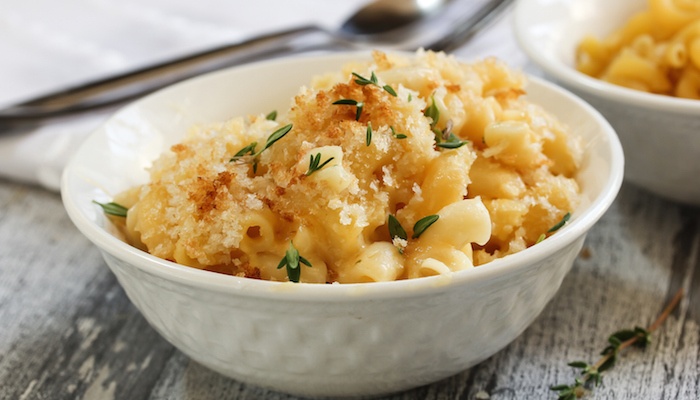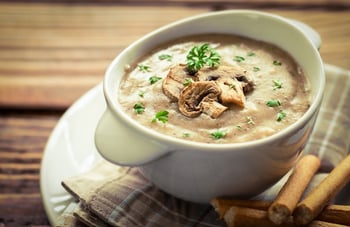 Having worked with food and beverage manufacturers and food service providers in nearly every sector of the market, our food formulators have had to accommodate a wide range of challenges…and questions. We’re often asked about how a product may perform in certain environments or which type of product is best in a particular application.
Having worked with food and beverage manufacturers and food service providers in nearly every sector of the market, our food formulators have had to accommodate a wide range of challenges…and questions. We’re often asked about how a product may perform in certain environments or which type of product is best in a particular application.
This article highlights some common whey protein FAQs that we receive; in particular in regards to:
- Grande Bravo® functional whey protein concentrate (WPC)
- Grande Gusto® reduced lactose whey
- Grande Ultra® whey protein isolate (WPI)
If you’re considering any of these innovative whey ingredients to improve the texture, flavor, nutrition and cost optimization of your food or beverage products, read on for answers to 10 common questions!
- Are whey proteins made from milk?
- How does whey protein need to be labeled?
- Is whey protein all-natural?
- What are whey protein’s uses in food?
- Does using WPI require adding sugar to the label?
- Can whey protein be used in dry mac & cheese?
- How does WPI perform in a beverage application?
- How is WPC incorporated into a food system?
- What type of food processing equipment is required?
- How can I tell whether Grande whey products will work in my application?
1. Are Grande whey proteins made from milk protein vs. whey protein?
Technically, all whey protein products have their origins in milk, but there’s a difference between milk protein and whey protein. Milk protein is derived directly from milk and is digested slowly.
Grande Custom Ingredients whey protein products, on the other hand, are produced as a result of the cheesemaking process. Whey protein has much better digestibility because it digests more quickly. All Grande Custom Ingredients products start out as top-tier cow’s milk from dedicated dairy producers that is made into high-quality white Italian cheese.
2. How does whey protein need to be labeled on a product?
The labeling requirements will differ depending on the type of whey protein used in a formulation. For Grande products, in particular, you can expect the following:
Grande Bravo Ingredient Statement: “Whey Protein or Whey Protein Concentrate. Contains Milk.”
Grande Gusto Ingredient Statement: “Reduced Lactose Whey. Contains Milk.”
Grande Ultra Ingredient Statement: “Whey Protein or Whey Protein Isolate. Contains Milk.”
3. Is whey protein an “all-natural” ingredient?
Not all whey protein concentrates can be labeled all-natural. However, those produced by Grande Custom Ingredients Group do qualify as all-natural ingredients due to our proprietary production process. No bleaching or chemical modifications are made during the drying process, which cannot be said of many commodity whey proteins.
Our quality protein products are all-natural sources of protein, similar to how tomato paste or granulated sugar are considered natural concentrates. Grande products also retain all their natural health benefits and contain all nine essential amino acids to help build muscles and aid in weight loss.
4. What are whey protein's uses in food products?
The primary applications that are ideal for Grande Bravo WPC include soups, sauces, dressings, gravies, dips and spreads. It is also used in desserts, frozen confectionaries and other creamy formulations.
Grande Gusto is commonly used in cheese sauces, queso dips, nacho sauce and other cheesy dips and spreads.
Grande Ultra WPI is typically used in sports protein drinks, energy drinks, juice drinks, flavored waters and nutritional supplements.
5. Does using Grande Ultra WPI require including sugar on the label?
Food manufacturers must consult their own legal teams to finalize their labels, but Grande Ultra WPI is very low in naturally occurring sugars, with typical lactose values of less than 1%. No additional sugars are added to Grande Ultra during the production process. In fact, sugar that’s present in milk is removed as part of the purification process during production.
This is an important factor for food manufacturers. For years, many low-fat products on the market were promoted as “better for you,” but they actually contained a laundry list of artificial ingredients and high amounts of sugar to make up for lost flavor. Savvy consumers have caught on and realized these products weren’t as healthy as they claimed to be. Now, consumers demand clean labels and ingredients that are naturally low in sugar.
The U.S. Food and Drug Administration (FDA) requires that added sugars be listed on the nutrition facts labels of all packaged foods. According to the FDA, added sugar is defined as “sugars that are either added during the processing of foods, or are packaged as such (e.g., a bag of table sugar), and also includes sugars from syrups and honey, and sugars from concentrated fruit or vegetable juices.”
6. Can Grande Gusto whey protein be used in dry mac & cheese? How does it affect texture, taste, etc.?
Yes. Using Grande Gusto in a dry mac and cheese sauce is an ideal application. It can partially replace cheese powder or fresh cheese.
The addition of Grande Gusto will enhance the water-binding properties of the finished product, controlling syneresis and pooling while improving the texture of the finished product so that its mouthfeel is creamier and more “fat like.” The cheesy notes consumers desire are also maintained and an independent study showed that participants actually preferred a mac and cheese formulation containing Grande Gusto when compared to the control.
RELATED CASE STUDY: How Grande Gusto Cheese Replacement Outdid the Real Thing
7. How does Grande Ultra WPI perform in a beverage application?
Adding Grande Ultra WPI to a beverage may have an impact on the finished product, so it’s important to answer a few questions during your formulation process when considering whey proteins:
Does your beverage require clarity?
The finished beverage needs to be formulated at a pH below 3.5, which is the isoelectric point of whey proteins. A formulation with pH above 3.5 that includes whey proteins may result in turbidity. It’s important to note that Grande Ultra whey protein powder is among the clearest WPIs available on the market.
Is the beverage a dry mix or Ready To Drink (RTD)?
If the product is RTD, a regular WPI will work in the production process. If the beverage is a dry mix, the WPI needs to be instantized to incorporate into the solution quickly.
How much protein content do you want in your beverage?
Grande Ultra can be formulated into a beverage at various levels of whey protein supplementation. A typical 8-oz. beverage formulation contains between 10-20 grams of protein per serving. Higher levels of protein could result in the product gelling during processing when heat is added.
What flavor(s) can be used in the formulation?
Grande Ultra WPI is relatively flavorless, making the vast majority of flavor profiles conducive to its use. However, products and trending beverages that are high in tannins may not interact well with whey proteins. Some examples of products containing high tannin levels include tea, grapes, ciders and coffee.
8. How is Grande Bravo WPC incorporated into a food system?
Grande Bravo is a functional whey protein that can be used to improve the texture and mouthfeel of many applications. It has the ability to bind water, so it’s important to hydrate it prior to adding it into an application to maximize its functionality.
When used to reduce traditional dairy, it has the capability to perform as well or better than its fresh counterparts and eliminates many of the drawbacks of using fresh ingredients. Because of its long shelf life under a range of conditions, food manufacturers do not need to worry about price volatility, refrigeration, spoilage and quality control.
9. What types of food processing equipment does Grande Bravo work in?
Grande Bravo is an extremely versatile ingredient that allows it to work in multiple food processing systems. It is conducive to a wide range of environments, including kettle cook, high shear, pumping, homogenization, retort, freeze/thaw and baking.
10. How can I tell whether whey protein will work in my applications?
Each application has its own unique challenges, and the best way to discover whether a Grande whey protein product will work is to connect with one of our food scientists who have the experience — and passion — to create top-notch formulations that consumers love. They’ve seen it all and, if there’s a way, they’ll find it.
Contact us today to begin exploring your options.





